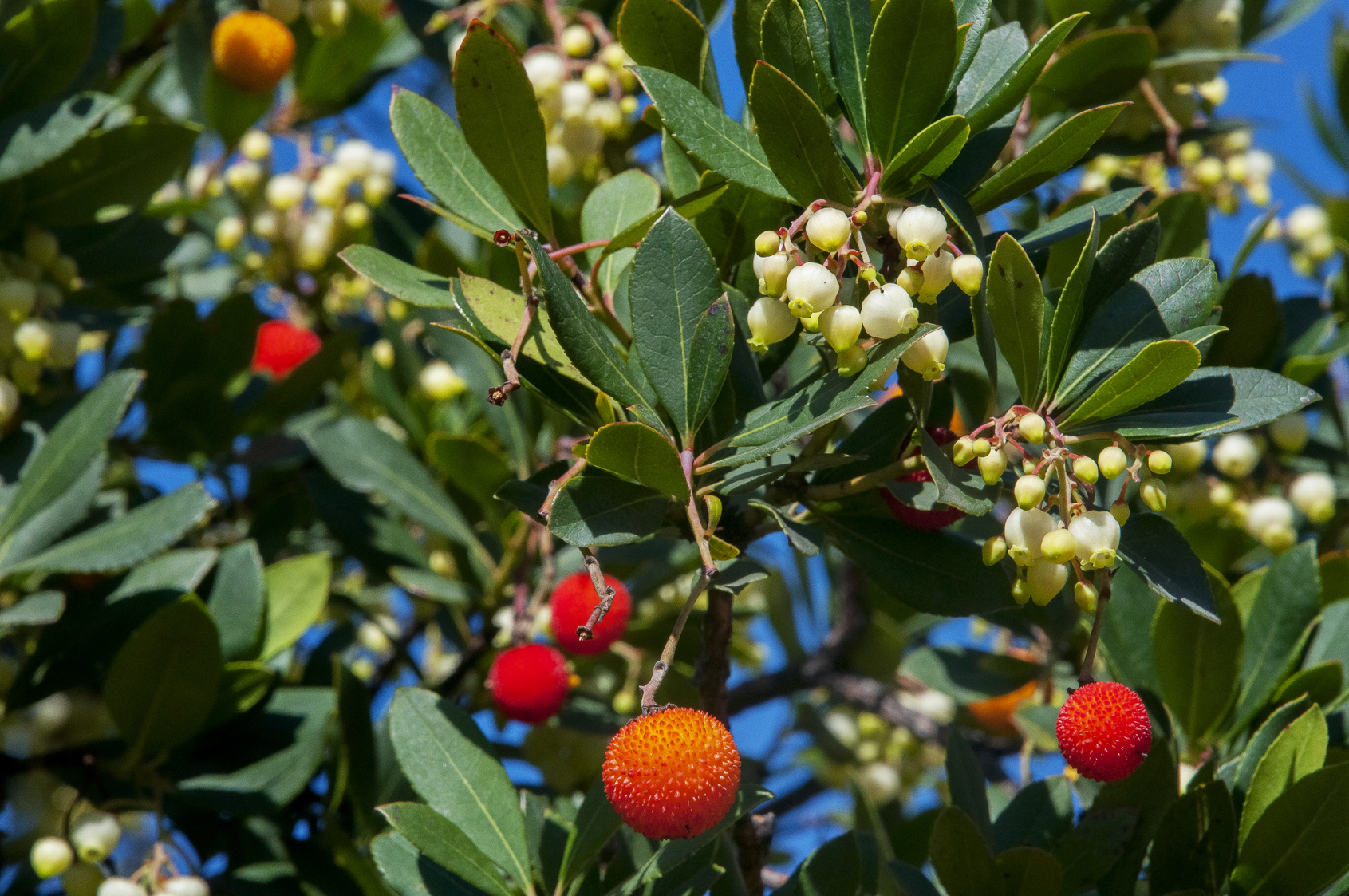The Arbustus 0 Comments

While most of us know that the Arbutus is an evergreen sapling, typical of the Mediterranean scrub in Sardinia, perhaps not everyone knows that during the Italian Risorgimento it was one of the symbols of Unification of Italy for its colors, being the tree portraying the national unity recalling in Autumn the ones of the Italian flag, with the green leaves, the white flowers and the red ripe fruits.
The Italian poet Giovanni Pascoli devoted an ode to the Arbutus, "Al corbezzolo", where it is told of the first hero who died for Italy, the young Pallante, ally of Aeneas, and killed in the war against Turn, Rutuli's King, whose coffin was interwoven with branches of arbutus, foreseeing in it the first Tricolor Italian flag.
The arbutus has also a vigorous reaction to the fires (and the Creator wanted to give it an advantage in a beaten by summer-fires Sardinia!) by producing new suckers and regenerating rapidly.
Evergreen plant that loves the Mediterranean climate, the arbutus in autumn presents both the white bell-shaped flowers and the sweet-taste bright red fruit.
The round arbutus-berry fruits, with granular peel, called the corbe (from where the Italian word corbezzolo comes from), are edible and used in Sardinia for the preparation of delicious jams and for flavoring the Filu 'e ferru.
The rare and precious arbutus-berry honey (because when blooming autumns too cold flowers are not visited by the bees that are inactive with the cold), has light balsamic properties.
According to some scholars, the arbutus’ root decoction is useful in treating atherosclerosis.
[...] your white flowers bloom when the red berries are already there, and your endless regenerating reveals that the winter idleness belongs to others and not to you. (Odi – To the Arbutus, Giovanni Pascoli)
--
written by Daniela Toti
Share your opinion with us!